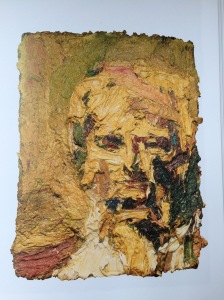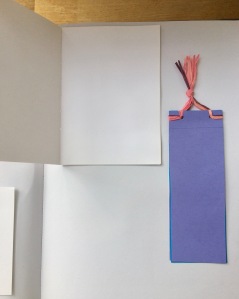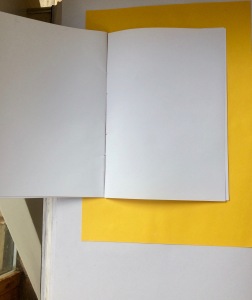TUTOR’S REPORT – PART 5
Overall Comments
Patricia, thank you for an informative submission, which displays your methodology and journey of drawing in a developed way. This is a dynamic, bold and substantial submission which shows a sense of self-discovery and a boundless sense of exploration in your personal language of drawing. The shorter project works have allowed you to be fluid by fusing abstract ways of seeing with the concrete ways of looking. I like how you have abandoned yourself by reflecting and digesting the world around you without seeing an answer at the time. Very tricky to do sometimes. You have strength in leaving work alone and letting it be. You are getting there with your parallel project (PP) and you have moved away from the obvious of the typical notions of abstraction, having a subject of only flowers and the language of line. It is fine for your PP to reflect your practice as long as there is a line of enquiry, which is clearly developing, everyday.
Feedback on assignment
Demonstration of technical and Visual Skills, Quality of Outcome, Demonstration of Creativity
Project 1- you dissect, reflect and digest the scene of the V&A in an interesting way where you study what time can mean conceptually. And because of this, the works are fluid; show movement but also a static notion of the standstill of time. Using ghostly marks and traces gives a sense of what has been but the dark palette depicts a continuous solid presence of an audience. What really works with the studies in your sketchbook is the layering of delicate and harsh media to build a tension of atmosphere- is it a dark place or is it crowded?
The consistency of the fluid figure is carried into the motionless figure and I think that this has given you some freedom to be really loose in your application but also build up and see abstraction in your work for your parallel project. And how useful that your thinking methodology is an abstraction of thinking as well the physical work itself.
Artists Book- this is an insightful and self-actualising way for you to develop previous concepts especially with space and your grand-daughters’ relationship with bamboo. As you say it’s not the bamboo that’s changed but her opinion of it. These drawings add to the commonality of your practice with dramatic marks, atmosphere and ghostly suggestion of what once was. Your ability to layer creates depth to the drawings but there could be more play with the artists book itself. This is a small project but be more dynamic with the way the existing formats of the book as you have done with an alternative drawing tool.
Project 3- I like the fact that you see a ‘finer focus’ as deeper listening so go back to some of your darker layered works and could you incorporate this finer focus in them more? This layering and intricacies could enhance some of the areas in your work so there is more intrigue. However, you work much better when you work with a darker palette than a colourful one, although still subdued it does not quite communicate the fluidity and movement of your work.
Project 4- this is an engaging piece of work which holds sophistication in the way you handle the chosen drawing media. There is an investigation into the charcoal, pastel, eraser, chalk and each have been used in relation with the other. This is either to create tension between the qualities of line or intertwining the threads of marks together. Without seeing the lines of time as sporadic and separate pieces, the unity is told in the tonal qualities used. It reminds me of cartography or GPS lines (art work has been done using GPS lines which you could look into.) I did spend time looking at the layered elements of this piece.
Assignment- you have continued to explore the meaningful way in which you work which is tapping into the thought of thinking as a visual language. This is a very interesting concept, which echoes throughout your practice.
There has been perseverance in your conclusion to the assignment. You have battled with the obvious and I am glad you did not go for work that is accessible and moved away from the figures and portraits. You have documented your journey well and this comes through the most in ‘Thought Lines’ (yellow and blue) because it describes your notions of your entire subject through not only lines but also colours and textures. The lilies seem too held back for you and although the other ‘Thought Lines’ piece (pink and blue) is a natural development for you, it seems a little repetitive to project 4. The Blue and Yellow piece, adds a different dimension to your work where a further exploration of atmosphere is created. The linear qualities show the exploration of a space with semi-geometrical and fluid lines incorporated.
Parallel project– this is an interesting way to start “Is the subject of your drawing important enough?” And I am glad you have played with the idea of exploration through drawing rather than giving answers. However, the subject of flowers is too concrete and limiting, as it is a subject that has been done many times. You then go onto think about the sense of spirituality and this is a useful move as you have identified it will not involve just flowers. However, be careful not to be too twee with this subject matter as it can become quite mystical. Your current practice involves, atmospheric, ghostly, traces and almost an elemental quality and this is engaging.
‘A Diary Without Words’- although you have done a substantial amount of research so far related to abstraction in your own work. Are the artists relevant? The movements that you list can be quite formal and ordered and compare this to the fluidity of your own work. A lead is perhaps looking at the untouched elements of your visual collection. This will disallow you to overwork and make yourself to make things look good. These images are dynamic and explosive but they are confined in frames and edges of a book. Does this reflect the formal qualities of abstraction? Something for you to think about.
Your search for a new language is interesting because you explore line as a vocabulary. Line is not only explored ion your mark making but the way you move the camera lens in a straight line, the lines of the edges of the concertina book and pages and even the lines of the grains on your table. Maybe your work can incorporate lines, which we dismiss subconsciously?
Sketchbooks
Demonstration of technical and Visual Skills, Demonstration of Creativity
Your sketchbook is explosive and full of investigations with a common theme of investigating lines, marks and abstraction in your works. These studies have helped you plan and test for more refined work in larger pieces. There are good connections between your primary sources and inspirations, which show a clear response in the practical work you, do.
Research
Context, reflective thinking, critical thinking, analysis
You have an array of artists, which have fed, into your work moving forward. You are inquisitive with the questions their work surround. Good comparisons and fine not to like everything as this builds up you critical thinking and having a stance by reading lots of different sources. Looking at the contextualisation of the exhibitions you have seen has enlivened your appreciation of art and by looking at wider issues, I hope this has helped you think about what the audience might see in your work. There is certainly a personal voice coming through in your research and with connections to your own work.
Learning Logs or Blogs/Critical essays
Context, reflective thinking, critical thinking, analysis
You reflect very well on each project and go beyond the obvious so you are thinking deeper about how you work, think and make as an artist. Your logbook is substantial and it has been insightful to read behind your thinking which has an air of self-discovery and realisation.
Your critical essay on Auerbach reads well with an object but subjective journey of the exhibition. You dissect and connect concepts with his techniques but at the same time continue to be your inquisitive self. This is a good stance for your critical essay.
Suggested reading/viewing
Context
- Marlene Dumas- fluidity of the media, atmosphere, semi-figurative
- Leon Kossoff- Movement and introduction of colour in your works.
- William Kentrdige- videos – this artists works with animating his charcoal drawings. There are many YouTube videos.
- Not sure of you’ve come across this book but tere are great articles in there about the language of draing whch will aid you with your PP.
Jack Southern, The Drawing Projects: An Exploration of the Language of Drawing Black Dog Publishing; 1 edition (August 2, 2011)
Pointers for the next assignment
- Reflect on this feedback in your learning log.
Please inform me of how you would like your feedback for the next assignment. Written or video/audio
Critical essay (plan)-
- Be careful with the word abstraction- are you seeing as a process, a technique or an art movement? Define this right at the beginning.
- To focus on two conflicting statements will give a line of enquiry and a claim to the essay once you define what you mean by abstraction. Make sure the arguments and your analysis of them fits in with your definition.
- Good to focus on two of your works rather than everything.
- Be careful not to assume the conclusion- it can be seen as flippant to say that work can be seen as objective so make this thinking more concrete.
Well done, I look forward to your final assignment.
| Tutor name |
Diana Ali |
| Date |
22/04/17 |
| Next assignment due |
14/05/17 |


















